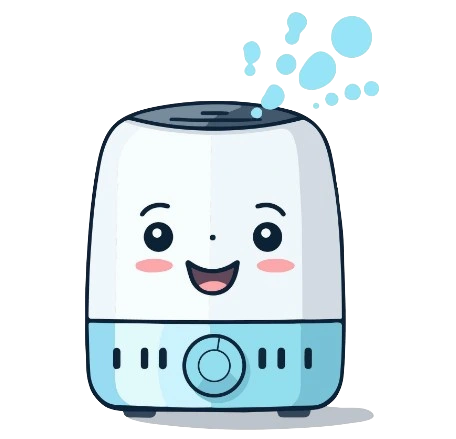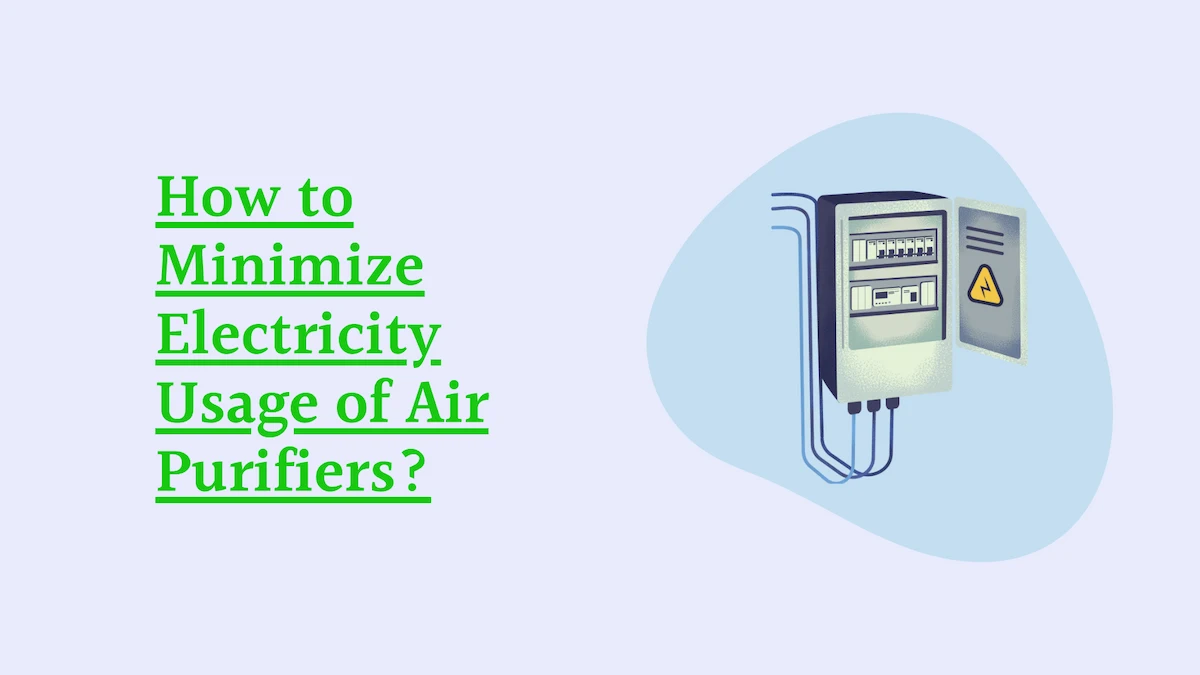In today’s world, adopting a sustainable lifestyle has grown increasingly crucial. With the growing concern over climate change and environmental degradation, individuals are seeking ways to reduce their carbon footprint and make a positive impact on the planet. One area where people can make a difference is in their homes, by adopting green practices and using energy-efficient appliances. Air purifiers, which are commonly used to improve indoor air quality, can have a significant impact on energy consumption. In this article, we will explore the energy consumption of air purifiers, understand the different types available in the market, and provide tips on how to choose the right one for your needs while reducing energy usage.
Energy Consumption of Air Purifiers:
Air purifiers work by removing pollutants and contaminants from the air, improving indoor air quality. However, they also consume energy in the process. The amount of energy consumed by an air purifier depends on various factors such as the size of the unit, the type of filtration system used, and the fan speed settings. On average, air purifiers consume around 50-200 watts of electricity per hour of operation.
According to a study conducted by the Lawrence Berkeley National Laboratory, air purifiers can account for up to 10% of a household’s total electricity consumption. This is significant considering that households are increasingly relying on air purifiers to combat indoor air pollution. It is important to be aware of the energy consumption of air purifiers and take steps to reduce it without compromising on indoor air quality.
Choosing the Right Air Purifier for Your Needs
When selecting an air purifier, it’s essential to take into account your individual needs and preferences. Factors such as room size, air quality concerns, and budget should be taken into account.
For smaller rooms or personal use, a compact air purifier with a HEPA filter may be sufficient. These units are generally more energy-efficient and cost-effective compared to larger models. However, they may have a lower Clean Air Delivery Rate (CADR), which measures the volume of clean air produced by the purifier.
For larger rooms or open floor plans, a larger air purifier with a higher CADR may be necessary. These units typically have more powerful fans and larger filters, which can consume more energy. It is important to strike a balance between energy consumption and the effectiveness of air purification.
If you have specific air quality concerns such as allergies or asthma, it is recommended to choose an air purifier with a HEPA filter. HEPA filters are highly effective in removing allergens and other airborne particles. However, keep in mind that HEPA filters may need to be replaced more frequently, which can add to the overall cost and environmental impact.
Budget is also an important consideration when choosing an air purifier. While high-end models may offer advanced features and superior performance, they can also be more expensive and consume more energy. It is important to find a balance between cost, energy consumption, and performance.
Simple Steps to Reduce Energy Usage of Air Purifiers
Reducing the energy consumption of air purifiers is not only beneficial for the environment but also for your electricity bill. Here are five simple tips to help you reduce energy usage:
#1: Opt for Energy-Efficient Models
Choosing an energy-efficient air purifier is one of the most effective ways to reduce energy consumption. Energy Star certified models have been tested and proven to meet strict energy efficiency guidelines set by the EPA. These models are designed to consume less energy without compromising on performance.
Energy Star certified air purifiers use advanced technologies such as variable speed fans and sensors to optimize energy usage. Variable speed fans allow the user to adjust the fan speed according to their needs, reducing energy consumption when maximum purification is not required. Sensors can detect changes in air quality and adjust the fan speed accordingly, further optimizing energy usage.
Some examples of energy-efficient air purifiers include the Coway AP-1512HH Mighty Air Purifier and the Blueair Blue Pure 211+. These models have received Energy Star certification and are known for their energy efficiency. They use advanced filtration systems to remove a wide range of pollutants from the air while consuming less energy compared to other models.
#2: Clean or Replace Filters Regularly
Cleaning or replacing air purifier filters regularly is essential for maintaining optimal performance and reducing energy consumption. Dirty filters can restrict airflow, causing the air purifier to work harder and consume more energy. It is important to follow the manufacturer’s recommendations for cleaning or replacing filters.
To clean a filter, start by turning off the air purifier and unplugging it from the power source. Remove the filter from the unit and gently vacuum it to remove any dust or debris. If the filter is washable, rinse it under running water until it is clean. Ensure the filter is fully dry before reinstalling it into the air purifier.
If the filter is not washable or if it is damaged, it may need to be replaced. Most air purifiers have replaceable filters that can be easily purchased online or at home improvement stores. It is important to choose filters that are compatible with your specific air purifier model.
Regularly cleaning or replacing filters not only improves the efficiency of the air purifier but also ensures that it continues to provide clean and healthy air. It is recommended to clean or replace filters every 3-6 months, depending on usage and air quality conditions.
#3: Use Air Purifiers Strategically
Using air purifiers strategically can help reduce energy consumption without compromising on indoor air quality. Instead of running air purifiers continuously, consider using them only when necessary and in specific areas of your home.
For example, you can run the air purifier in the room where you spend the most time during the day, such as the living room or bedroom, and turn it off in other rooms. This allows you to focus on improving air quality in the areas where you spend the most time, while reducing energy consumption in unused areas.
You can also use the air purifier on a higher fan speed setting for a shorter period of time to achieve the desired air quality. For example, if you are cooking or cleaning and there are more pollutants in the air, you can increase the fan speed temporarily to remove these pollutants more quickly. Once the air quality improves, you can reduce the fan speed or turn off the air purifier.
It is important to monitor the air quality in your home and adjust the usage of air purifiers accordingly. Investing in an air quality monitor can help you keep track of indoor air quality and make informed decisions about when to use air purifiers.
#4: Turn Off Air Purifiers When Not in Use
Turning off air purifiers when they are not in use is a simple yet effective way to reduce energy consumption. Many people forget to turn off appliances when they leave the room or when they are no longer needed. This not only wastes energy but also adds to your electricity bill.
To remember to turn off air purifiers, develop a habit of checking them before leaving a room or before going to bed. Make it a part of your daily routine to switch off appliances that are not in use. You can also use timers or smart plugs to automatically turn off air purifiers at specific times or when you leave the room.
It is important to be mindful of energy consumption and take small steps to reduce it. Turning off appliances when they are not in use is a simple yet effective way to save energy and reduce environmental impact.
#5: Consider Alternative Air Purification Methods
If you are looking for more energy-efficient alternatives to traditional air purifiers, consider natural ventilation, houseplants, or portable air cleaners.
Natural ventilation involves opening windows and doors to allow fresh air to circulate indoors. This can help remove indoor pollutants and improve indoor air quality. However, natural ventilation may not be suitable for everyone, especially in areas with high outdoor pollution or extreme weather conditions.
Houseplants can also help improve indoor air quality by absorbing carbon dioxide and releasing oxygen. They can also remove certain pollutants from the air through a process called phytoremediation. Some common houseplants that are known for their air-purifying properties include snake plants, spider plants, and peace lilies.
Portable air cleaners, such as personal ionizers or desktop air purifiers, are smaller and consume less energy compared to larger units. These devices are designed to provide localized air purification and can be used in specific areas where you spend the most time, such as your office or bedroom. Portable air cleaners are a cost-effective and energy-efficient option for those who do not require whole-house air purification.
It is important to consider your specific needs and requirements when choosing alternative air purification methods. While these methods may not provide the same level of purification as traditional air purifiers, they can still make a positive impact on indoor air quality while reducing energy consumption.
Conclusion
Reducing the energy consumption of air purifiers is not only beneficial for the environment but also for your electricity bill. By opting for energy-efficient models, cleaning or replacing filters regularly, using air purifiers strategically, turning them off when not in use, and considering alternative air purification methods, you can make a significant impact on energy consumption.
Small changes in our daily lives can add up to make a big difference in creating a greener future. By being mindful of our energy usage and making conscious choices, we can contribute to a more sustainable and environmentally friendly world. So, let’s take the first step towards a greener future by reducing the energy consumption of our air purifiers and making small changes in our daily lives.
Fausto Tatiur, the founder of RecetteCookies, has been deeply involved in researching air purifiers and indoor air quality since 2019. Serving as our chief tester, he supervises all evaluations conducted on air quality products. Therefore, you’ll consistently see his name associated with our reviews.

